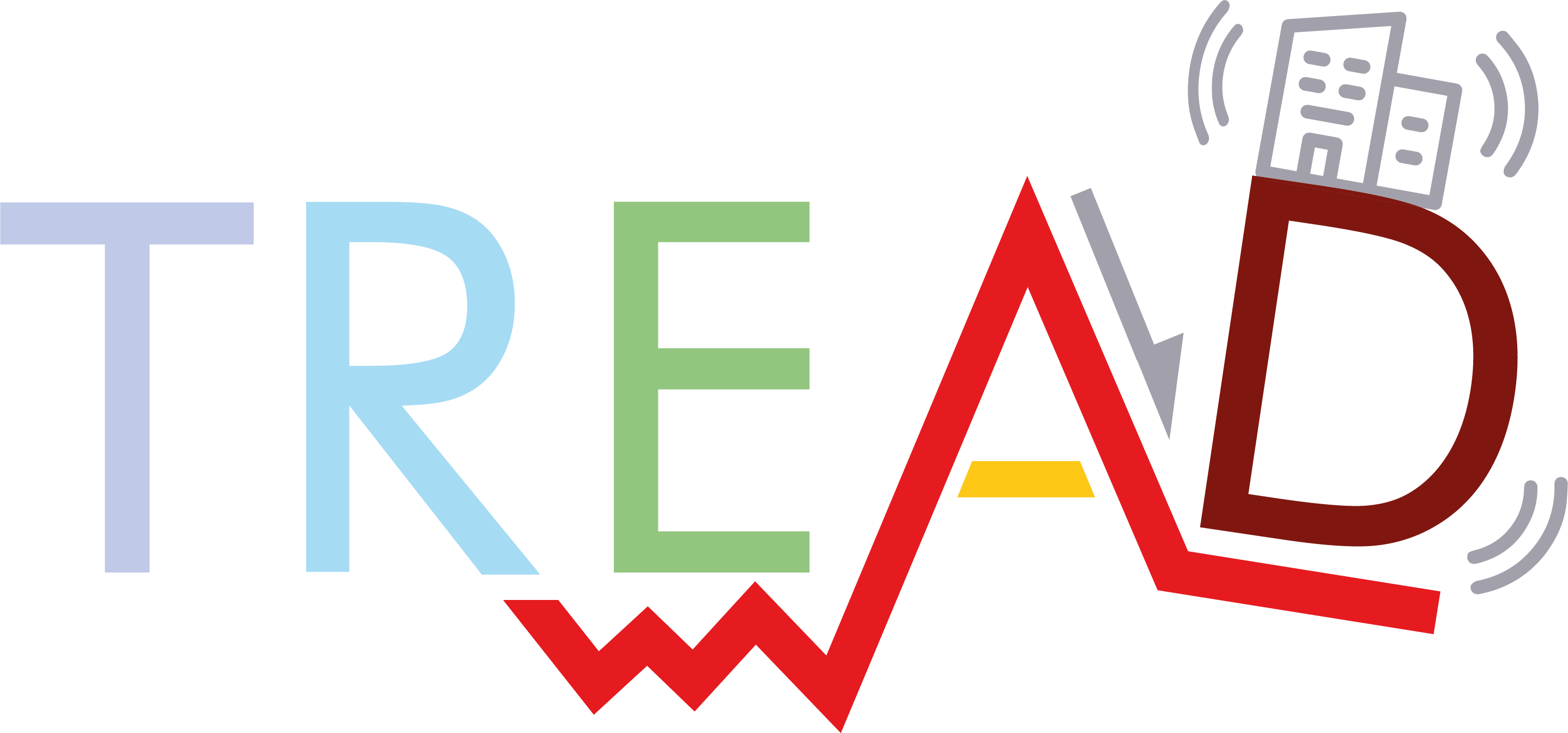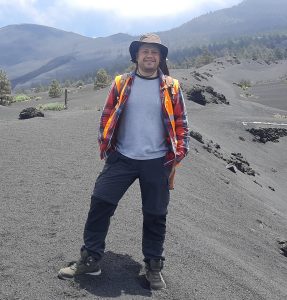 I am John Jairo Gallego Montoya, from Colombia. I completed my undergraduate studies in Geological Engineering at the National University of Colombia, and I pursued a Master’s Degree in Earth Sciences with an emphasis on Quaternary Geology at the joint program at the universities of Bern and Fribourg in Switzerland.
I am John Jairo Gallego Montoya, from Colombia. I completed my undergraduate studies in Geological Engineering at the National University of Colombia, and I pursued a Master’s Degree in Earth Sciences with an emphasis on Quaternary Geology at the joint program at the universities of Bern and Fribourg in Switzerland.
Since my bachelor, I have had the opportunity to participate in some neotectonics and paleoseismology projects both in the academic and private sectors, highlighting neotectonic research as geomorphological analysis and morphotectonic characterization of active faults in the North Andean region for infrastructure projects. The experience from my master thesis gave me an interest and opportunity to deepen my understanding of the earthquake geology subject, especially in fault segmentation, dating of recent deposits, historical seismicity, and social perceptions of seismic risk at the Cauca River canyon in Colombia. My master’s degree taught me the importance of good formulation and planning of an academic project, the relevance of collaborative networks, and the discipline needed to meet the proposed objectives.
Professionally, I had the amazing experience of working in geohazard zonation and disaster risk management with communities in urban and rural areas in the Antioquia State of Colombia. This led me to see the importance and application of geoscientific studies in disaster risk reduction processes. I also have a great affinity for teaching and mentoring. Between 2019 and 2021, I joined as a professor in the Geological Engineering program of the EIA University in Colombia. Within my teaching process, I participated in the formulation and execution of an institutional research project on disaster risk assessment and reduction for rural schools.
Within the TREAD Project I am the PhD student for Project 1. Earthquake timing in complex fault zones: new approaches in paleoseismology. The PhD will be under the main supervision of the Prof. María Ortuño Candela from the University of Barcelona in Spain, the co-supervision of Dr. Lucilla Benedetti from CEREGE – Aix Marseille University in France and the collaboration of the Dr. Moritz Kirsch from Helmholtz Institute Freiberg for Resource Technology in Germany.
My research will focus on the improvement of earthquake chronology by using advanced techniques to date paleoearthquakes with better resolution. Several scientific methods will be used in order to enhance the spatial resolution of paleoseismological records to better understand the behavior of active faults in three particular case studies (the Apennines and the Catalan Coastal ranges and the Eastern Betic Cordillera), serving as a reference for future worldwide studies. The main method to be developed during my PhD will be the analysis of hyperspectral images of outcrops (paleoseismological trenches and fault rock scarps) in order to create a procedure that will allow the use and applicability of this tool in paleoseismology.
Starting date: December 1, 2023
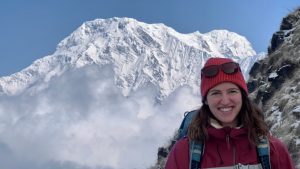 Hello, I am Maaike Fonteijn and I am from the Netherlands. Since I was young I have been fascinated by the earth around us and especially in the mountains I looked with amazement at everything around me. The study Earth Sciences was therefore the perfect fit for me. I started my study Earth Sciences at Utrecht University where I soon found myself very interested in plate tectonics and seismology. During my master Earth Structure and Dynamics at Utrecht University I developed a keen interest in earthquakes, which brings together all my main interests. This along with the major social impact earthquakes can have made me want to study them. My master thesis focussed on how seamount subduction affects megathrust seismicity. There are different hypotheses in the literature, where seamounts are thought to either be a barrier to earthquake propagation or a seismic asperity promoting earthquakes. My research presented the first earthquake sequence model including seamounts and showed that the wake of the seamount is a barrier to earthquake propagation, while the seamount itself is a seismic asperity and its flank an area favourable for earthquake nucleation.
Hello, I am Maaike Fonteijn and I am from the Netherlands. Since I was young I have been fascinated by the earth around us and especially in the mountains I looked with amazement at everything around me. The study Earth Sciences was therefore the perfect fit for me. I started my study Earth Sciences at Utrecht University where I soon found myself very interested in plate tectonics and seismology. During my master Earth Structure and Dynamics at Utrecht University I developed a keen interest in earthquakes, which brings together all my main interests. This along with the major social impact earthquakes can have made me want to study them. My master thesis focussed on how seamount subduction affects megathrust seismicity. There are different hypotheses in the literature, where seamounts are thought to either be a barrier to earthquake propagation or a seismic asperity promoting earthquakes. My research presented the first earthquake sequence model including seamounts and showed that the wake of the seamount is a barrier to earthquake propagation, while the seamount itself is a seismic asperity and its flank an area favourable for earthquake nucleation.
I am super happy to be part of the TREAD doctoral network! My PhD project (#2) will focus on understanding the complex fault system in the Central Apennines (Italy) by combining InSAR and seismo-thermo-mechanical models. The geodetic measurements from InSAR contain valuable information about the seismic cycle, but several challenges are faced when using InSAR for determining seismic hazard. I will try to overcome these challenges by testing hypotheses with seismo-thermo-mechanical models about for example the deformation mechanism and strain distribution, by evaluating the temporal variability of the interseismic signal and by improving the geodetic inversion for slip rate on individual faults.
Starting date: 01/10/2023
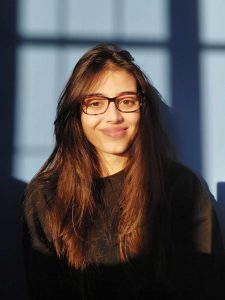 My name is Aurora, I’m Italian, and I come from Naples, where I have lived since birth. I earned my Bachelor’s and Master’s degrees in Physics from the University of Naples Federico II. My master’s thesis in Seismology reflects the interest that many people in this area of Italy develop in natural disasters, particularly earthquakes, especially after the event of Mw 6.9 that occurred in Irpinia in 1980. Moreover, the proximity to two different and very dangerous volcanic systems (Vesuvius and the Campi Flegrei Supervolcano) makes Neapolitan citizens particularly sensitive to the topic.
My name is Aurora, I’m Italian, and I come from Naples, where I have lived since birth. I earned my Bachelor’s and Master’s degrees in Physics from the University of Naples Federico II. My master’s thesis in Seismology reflects the interest that many people in this area of Italy develop in natural disasters, particularly earthquakes, especially after the event of Mw 6.9 that occurred in Irpinia in 1980. Moreover, the proximity to two different and very dangerous volcanic systems (Vesuvius and the Campi Flegrei Supervolcano) makes Neapolitan citizens particularly sensitive to the topic.
When I decided to study Physics, I thought it would be the best strategy to try to answer all the questions regarding our universe and the rules governing it that naturally arise when you start questioning the reality surrounding you as a kid. Spoiler: I ended up with just a few answers and more questions in my mind.
I’m also passionate about every form of art, and it’s my opinion that science studies the artworks of the biggest artist ever to exist: Nature.
Currently pursuing my Ph.D. at ETH Zurich within the Swiss Seismological Service (SED) research group, my project’s focus lies on seismic signatures associated with aseismic processes. With our work, we aim to enhance the characterization of aseismic phenomena, which may be very hard to detect and monitor, by examining seismicity catalogues at various scales. We seek to understand whether and how earthquakes may be driven and triggered by processes occurring within the Earth’s crust and not directly associated with the radiation of energy in the form of seismic waves.
Check https://tread-horizon.eu/phd-projects/#1689060235693-f30b9ec1-c779 for more info and stay tuned for updates.
Starting date: 1.11.2023
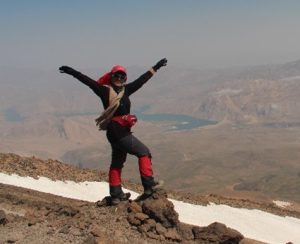 I am Nayereh, I come from Iran. My interest in geology dates back to my childhood and my family’s interest in traveling and climbing. I grew up beside very high mountains where every corner is covered with peeks and high hills that always struck me as to what is concealed beneath this widespread and soaring heights. My curiosity was highly aroused when a lot of earthquakes were occurring in my country and people always talked about a catastrophic earthquake that threatens the metropolis of Tehran but nobody told why.
I am Nayereh, I come from Iran. My interest in geology dates back to my childhood and my family’s interest in traveling and climbing. I grew up beside very high mountains where every corner is covered with peeks and high hills that always struck me as to what is concealed beneath this widespread and soaring heights. My curiosity was highly aroused when a lot of earthquakes were occurring in my country and people always talked about a catastrophic earthquake that threatens the metropolis of Tehran but nobody told why.
Therefore, I started my academic studies in the field of geology and continued it in the Research Institute for Earth Sciences (RIES) in the field of tectonics, focusing on “structural maturity of some seismic fault and scarp diffusion coefficient of some surface rupture of Iran” in my master’s thesis. Then, I received a job offer from the Seismotectonic and Seismology Department (SSD) of Geological Survey of Iran (GSI) as a Permanent researcher. I had the opportunity to gain many experiences in the seismically active region of Iran, where there are many earthquakes and surface ruptures with various characteristic and mechanisms and in the different tectonic regimes.
Now I am in European Centre Research and Teaching in Geosciences of the Environment (CEREGE) to work on “Linking fault damage zone mechanical and geometrical characteristics with fault seismic history” as part of the TREAD project. I am going to investigate the relation between the geometrical characteristic, slip rate and maturity of some Central Apennine faults with earthquake occurrence and also analyze the relationship between fault damage zone distribution and segmentation of the surface rupture.
 Hi! My name is Elisabeth, hailing from the vast landscapes of Kazakhstan but having spent most of my life in Germany. I studied geosciences and specialized in geophysics during my master’s studies at the Ruhr University in Bochum.
Hi! My name is Elisabeth, hailing from the vast landscapes of Kazakhstan but having spent most of my life in Germany. I studied geosciences and specialized in geophysics during my master’s studies at the Ruhr University in Bochum.
My passion for Geosciences initiated when I immersed myself in fiction novels, vividly illustrating the Earth’s interior and the mysteries hiding beneath the ocean’s surface. I was hooked, and that curiosity became a driving force, constantly pushing me to explore the wonders beneath our feet.
Now I find myself amidst the enchanting canals of Utrecht, delving into understanding what controls the transition from frictional to viscous deformation and with that the seismic to aseismic transition to develop a profound idea how earthquakes nucleate. By conducting friction and flow experiments and pairing them with microstructural analyses, I aim to reveal the operating microphysical processes active at the flow to friction transition. Besides advancing our understanding of earthquake processes, the obtained data and the refined microphysical models can be integrated into numerical models related to the seismic cycle. This presents a valuable opportunity for a better assessment of seismic hazards in carbonate terrains.
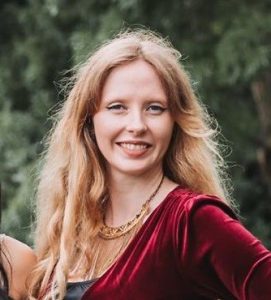 My name is Nolwen, and I come from France. I pursued my studies in Civil Engineering at Mines Paris and Geosciences at Ecole Normale Supérieure of Paris.
My name is Nolwen, and I come from France. I pursued my studies in Civil Engineering at Mines Paris and Geosciences at Ecole Normale Supérieure of Paris.
From a young age, I have been passionate about earth sciences, a fascination that began at the age of 10 when I used to collect stones by the dozens. Subsequently, I followed an academic path in geosciences with a specialization in Earth Physics. I completed multiple internships related to earthquakes and faults in France, Italy, and Taiwan.
For my PhD, I relocated to Padova to delve into the study of the formation of fault damage zones in carbonate rocks and their role in the seismic cycle. Through field geology surveys of seismogenic faults and numerical modeling of individual seismic ruptures and the seismic cycle, I aim to comprehend: (1) The mechanism behind the formation of fault damage zones, (2) How the presence of fault damage zones impacts individual seismic ruptures and the progression of seismic sequences, (3) How the presence of a damaged zone influences the near-field seismic wave radiation and associated strong ground motions.
Starting date : 01/10/2023
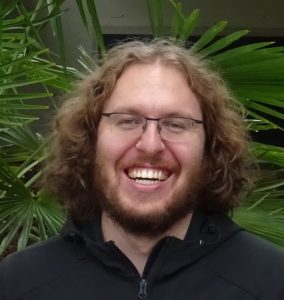 I am Alexander Koelzer from Germany. After a short stay at Cardiff University, I studied geosciences with a specialization in geophysics at Friedrich Schiller University in Jena, Germany.
I am Alexander Koelzer from Germany. After a short stay at Cardiff University, I studied geosciences with a specialization in geophysics at Friedrich Schiller University in Jena, Germany.
I was drawn to the field of geosciences out of a desire to understand the large-scale processes which form the physical world. This desire is also what led me to focus on geophysics and tectonics during my studies. I also developed a fondness for coding and numerical simulation in this time. Some of the projects I completed while in Jena were a study about the mechanics of the Alaskan-Aleutian subduction zone and a study investigating the origin of a geothermal anomaly in the Thuringian Basin. In 2022, I also had the chance to participate in a paleoseismological field study in Petrinja, Croatia. This experience confirmed for me that I wanted to pursue a PhD and that I wanted to work in earthquake research in particular.
During my PhD at Utrecht University, I will focus on how tectonics affects seismic hazard parameters in complex continental settings. For this purpose, I will first extend visco-elasto-plastic, seismo-thermo-mechanical numerical models, so that they can bridge the gap between tectonic and coseismic time scales. This will provide insights into how tectonic and rheological parameters affect seismic hazard parameters. It will also allow simulating synthetic earthquake catalogues for realistic orogenic settings.
Starting date: 01/11/2023
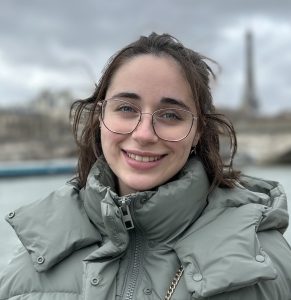 Hello! My name is Rachel Preca Trapani, and I am a 23-year-old from the small island of Malta. My scientific journey first started at the University of Malta, where I completed a bachelor’s degree in Geosciences and Physics. During the bachelor’s degree, particularly during my dissertation under the supervision of Prof Pauline Galea, where I was assessing tsunami simulation programmes in order to set up a tsunami warning system for the
Hello! My name is Rachel Preca Trapani, and I am a 23-year-old from the small island of Malta. My scientific journey first started at the University of Malta, where I completed a bachelor’s degree in Geosciences and Physics. During the bachelor’s degree, particularly during my dissertation under the supervision of Prof Pauline Galea, where I was assessing tsunami simulation programmes in order to set up a tsunami warning system for the
Maltese Islands, I truly understood the important impact any research, big or small, can have on the world. It was here that I discovered my love for learning, for earthquakes and their mechanics, and where I realised that I wanted to continue in academia.
Coming from such a small island, it was always my dream to experience the science community abroad and after missing Erasmus and other opportunities during the bachelor due to COVID, I was set on looking at the opportunities abroad. I carried out my master’s degree in Solid Earth Sciences at IPGP (Institut du Physique du Globe de Paris) in Paris, France, where under the supervision of Marion Thomas, Harsha Bhat and Yann
Klinger my thesis focused on investigating the effects of complex fault zone geometries on seismic rupture propagation. A historic event was revisited by exploring the effects of the different fault geometries through the comparison of the resulting surface damage zones with those observed in the field. This project showed the importance of the combination of numerical modelling and field observations in order to better our
understanding of complex fault zones.
My master’s thesis further opened me up to the world of numerical modelling which lead to my application for the TREAD PhD project. During my PhD, under the supervision of Alice Gabriel, Yann Klinger, Sebastien Hok and Oona Scotti, as well as with the help of Mathilde Marchandon, I will be based at the Ludwig-Maximillian University of Munich where I will be using 3D dynamic rupture modelling to forecast mechanically plausible
rupture scenarios within complex fault systems. I will specifically focus on the link between shallow fault rupture processes and surface rupture characteristics, as well as on computing physics-based ground motion models that account for source/site and path effects. The outcomes of the dynamic rupture models I will develop (i.e. surface fault displacements, ground motions and multi-segmented ruptures) will be used to estimate physics-based seismic and surface fault displacement hazard in a studied area. Overall, this project aims at evaluating seismic hazard in any fault system through a better understanding of the fundamental processes of earthquake physics.
The TREAD project is a massive opportunity for me to experience the international science community, to expose myself to different research approaches and to keep on learning whilst researching something I am passionate about that can have a positive impact on society. All these opportunities and challenges, both from a research aspect and a social aspect, will surely help me grow and develop as a scientist and a member of
society.
Starting date: 01/10/2023
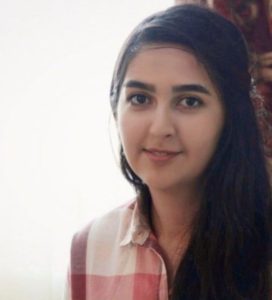 My name is Khatereh, and I am from Iran. Growing up in Iran, a developing nation in the twenty-first century, has provided me with firsthand insight into the continuous expansion of cities and urban areas through numerous construction projects. Witnessing this ongoing development has fueled my passion to become an engineer. I pursued my undergraduate studies in civil engineering at Sharif University of Technology, the leading institution for engineering fields in my country.
My name is Khatereh, and I am from Iran. Growing up in Iran, a developing nation in the twenty-first century, has provided me with firsthand insight into the continuous expansion of cities and urban areas through numerous construction projects. Witnessing this ongoing development has fueled my passion to become an engineer. I pursued my undergraduate studies in civil engineering at Sharif University of Technology, the leading institution for engineering fields in my country.
Iran ranks among the world’s top ten earthquake-prone countries, unfortunately resulting in catastrophic casualties and financial costs when earthquakes occur. Hence, I resolved to specialize in earthquake engineering for my master’s degree, aiming to contribute my expertise to mitigate such risks. I chose the University of Tehran for my graduate studies, where I focused on the topic of “Monte Carlo Simulation of Aftershock Probabilistic Seismic Hazard” for my thesis. This subject fascinates me deeply as I enjoy delving into probabilistic modeling, stochastic studies, and risk assessment.
For practical experience and additional expertise, I joined Karazmoodebana Company in 2017 as a structural designer. I that period, I designed and assessed the structures and foundations of several residential buildings and complexes. Furthermore, I served as a project manager assistant for three months at a structural design and construction company, overseeing two residential building projects. Since 2018, I have held the role of site manager, overseeing operations on-site.
With the culmination of my experiences and education, I am resolute in my decision to pursue doctoral studies. I am embarking on the TREAD project, where our research aims to model synthetic catalogs of earthquake ruptures in complex fault systems, investigating recurrence times and the probability of moderate to large magnitude earthquakes in a fault-based 3D model.
Moreover, through this project, I anticipate engaging with fellow scholars to exchange ideas, participate in scientific conferences, and collaborate on scholarly articles for publication in various journals.
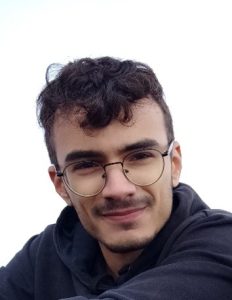 Bonjour! My name is Jarod Domenge, and I’m from the best city in France, Grenoble. I hold a Master’s degree in Natural Geohazards and Risk from Grenoble, and I previously completed a Bachelor’s degree in Earth and Planetary Science in Grenoble as well (it’s not the best city for nothing).
Bonjour! My name is Jarod Domenge, and I’m from the best city in France, Grenoble. I hold a Master’s degree in Natural Geohazards and Risk from Grenoble, and I previously completed a Bachelor’s degree in Earth and Planetary Science in Grenoble as well (it’s not the best city for nothing).
During my Master’s program, I specialized in seismic risk analysis, including the study of scattered waves in the Pacific Ocean and the development of a fault model to calculate Peak Ground Acceleration at a site in Turkey using an innovative method. I conducted this research at the Isterre laboratory in .. Grenoble. Additionally, I participated in a program called “Program Thematic Risk,” which aims to train students for careers in research.
For my PhD, I will focus on two main aspects. Firstly, I will explore methods to define earthquake occurrences by analyzing changes in seismic activity patterns, often related to factors such as deformation. Secondly, I aim to integrate distributed seismicity and fault sources in active seismic regions. By addressing these aspects, my research aims to advance our understanding of seismic hazard modeling and enhance the accuracy of probabilistic earthquake risk forecasts.
Starting date: 18th October 2023
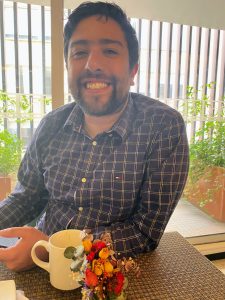
I am Julián Santiago Montejo from Colombia. I hold a degree in Civil Engineering from Universidad de los Andes in Bogotá, where I also completed my master’s degree with a focus on Structures, Materials, and Earthquake Engineering.
My research journey in earthquake engineering began during my master’s, initially as a research assistant at the university and later at the Colombian Geological Survey for over six years. I’ve had the privilege of both living and working in a country that resembles a laboratory due to its remarkable seismic activity, which includes a subduction zone, the crustal structures of the Andean Cordillera, and the Bucaramanga seismic nest
My expertise lies in seismic hazard assessment, encompassing geophysical exploration, site effects estimation, seismic zonation studies, ground motion models, seismic record processing, seismic catalog analysis, and more.
I have also gained international experience through research stays in Japan, a scholarship for a summer course on seismic and tsunami risk mitigation at Universidad Católica de Chile, participation in projects with the GEM Foundation, and collaborations with professors from institutions like Georgia Tech and Berkeley University in the USA. These experiences have broadened my understanding of earthquake engineering from various perspectives.
In the TREAD project, I will investigate the impact of seismic hazard modeling techniques on seismic risk assessment. This research will incorporate outputs from previous seismic hazard-oriented TREAD projects to estimate the impact of new technologies and practices on damage assessment. My project is primarily supervised by Vitor Silva from the GEM Foundation and Bruno Pace from Università degli Studi di Chieti-Pescara, with additional support from the WTW research network in the UK, creating a valuable blend of academic and industry expertise.
I am very excited about this new challenge and experience, and I hope my results can be replicated around the world and let decision makers to save lives and engineers to best understanding earthquakes regarding more resilience and less vulnerable cities.
Additionally to the research and work experience I will have in DC11, I think TREAD project and the MSCA fellowship is a perfect opportunity to democratize the knowledge, generating discussions with people from different countries, cultures institutions, experiences and skills to solve a singular problem from different perspectives, understanding the earthquake engineering as a multidisciplinary work.
Starting date: 1st November 2023
